The LG QNED91TSA 2024 is its premium full-backlit mini-LED with between 900 and 1500 individual dimming zones and Quantum Dot colour for a bright, vibrant image, even in a bright Aussie lounge room.
You may have noticed the TSA model post-nominal. ‘T’ denotes 2024 as ‘S’ did for 2024. The ‘SA’ denotes the region, e.g., Australia. This is important because if you read reviews for any TV, they will likely be older models or for different regions that may use different panels and tuners.
This is also important as this year marks the start of the new WebOS upgrade program. Purchasers will receive five versions of WebOS (including WebOS24) over five years; for example, WebOS 28 will come to this TV. LG has also committed to more regular security patches.
This is a full array back-lit mini-LED with independent dimming zones

(Any specs quotes are for 65”. Our review unit was 75”).
Unlike its edge-lit mini-LED value sibling (LG QNED86TSA 2024 – mini-LED Quantum Dot colour on a budget), this implements a full mini-LED backlight using a VA panel for better contrast. It has approximately 1000 dimming zones and more than 1000 nits HDR peak brightness.
Herein lies the puzzle faced by consumers. For example,
- TCL’s value C755 QD mini-LED quotes 512 dimming zones and 1300 nits HDR peak brightness, while its premium C855 has 1334 dimming zones and 3300 nits HDR peak brightness.
- Hisense Mini-LED U8AU claims 1000+ dimming zones and 2800 nits HDR peak brightness, and its UXAU claims 3800+ dimming zones and 3000+ nits HDR peak brightness.
- Sony Bravia 7 claims 480 dimming zones and 2000 nits HDR peak brightness.
This proves that the generic term ‘mini-LED’ is not equal. For example, there are now six-core mini-LEDs (equal to one standard mini-LED), ones with wide-angle lenses, and many more tricks. Ultimately, it is what picture image you like in the store (and they will all be set on overly bright store-demo mode), whether the legs/pedestal suit your TV cabinet, etc.
While other brands may boast about their specifications, LG is more circumspect.
It is essential to consider LG as a well-known and well-respected South Korean company with a proven track record in TVs. The LG QNED91TSA 2024 is a testament to this, offering a high-end, reliable, and superior mini-LED TV experience.
We have an excellent guide to TVs and types Confused about TV tech? That’s just what they want!
Note: LG QNED91TSA 2024 is an Australian-specific model. The 65 and 75” use a VA panel, and the 86” is IPS. Some regions use IPS panels (QNED90T), which have a much lower native contrast but have a wider field of view.
Australian Review – LG QNED91TSA 2024 (65” Tested and specs as of 19/06/24)
| Website | Product Page Manual User Guide Online Manual (WebOS 24) We try to avoid repeating too much of the 163-page user guide. |
| RRP | 65/75/86 RRP $2999/3999/5499 but look for EOFY discounts and soundbar bundles |
| From | LG Online, Harvey Norman, Domayne, JB Hi-Fi, Good Guys, Bing Lee, Appliances Online and many quality CE retailers |
| Warranty | 1-year ACL confers consumer rights against major defects for an extended period. |
| Made in | Indonesia |
| LG | LG (formerly Lucky-Goldstar from 1983 to 1995) is a South Korean multinational conglomerate. It makes electronics, chemicals, and telecommunications products. |
| More | CyberShack LG News and reviews CyberShack AV news and reviews |
We use Fail (below expectations), Pass (meets expectations) and Exceed (surpasses expectations or is the class leader) against many of the items below. We occasionally give a Pass(able) rating that is not as good as it should be and a Pass ‘+’ rating to show it is good but does not quite make it to Exceed. You can click on most images for an enlargement.
We are also tightening up on grading. From now on, Pass, for example, means meeting expectations for the price bracket. We consider a Pass mark to be 70+/100, with extra points added for class-leading and excellence. For 2023 reviews and earlier, deduct 10 points from them for reasonable parity.
First Impression – Pass
LG makes excellent-quality TVs; the fit and finish indicate that this one is well-made. The Magic Remote is clever and functional, with an on-screen cursor for easier typing and control.
The LG QNED91TSA 2024 has a 10mm black bezel and brushed metal trim. The 65” is 1452 x 907 x 285mm x 35kg with the stand and 1452 x 839 x 44.9mm x 31.1kg without. It is VESA 400 x 400 wall mountable. The panel is 44.9mm thick and is not quite a flush mount. The pedestal stand is excellent; you can use a smaller table or TV cabinet.
While its sibling, the QNED86TSA, is not about ‘speeds and feeds’, this should be. Why? Because this is LG’s premium mini-LED for 2024 and is seen as a viable alternative to OLED. However, with the current deals, you can get a superior LG OLED evo C4 for about $300 more.
Magic Remote MR24 – Pass
LG has resisted the trend of eliminating numeric buttons, which make free-to-air navigation much easier than wrestling with an EPG to find your channel. It is a Bluetooth remote

LG WebOS 24 – Pass+ for usability and FAIL for privacy
First, the exciting news – ReNew. You will get up to WebOS 28 over the next five years and security patches as needed. This is an industry-leading policy, as TVs are usually orphaned once released.
Second, the catch. LG is moving to a ‘Smart Life Solution Company’. Instead of just selling you a smart TV, it has become a platform-based service business model that continuously generates profits—a.k.a. advertisements! It is called LG Channels (FAST—Free Ad-Supported Television).
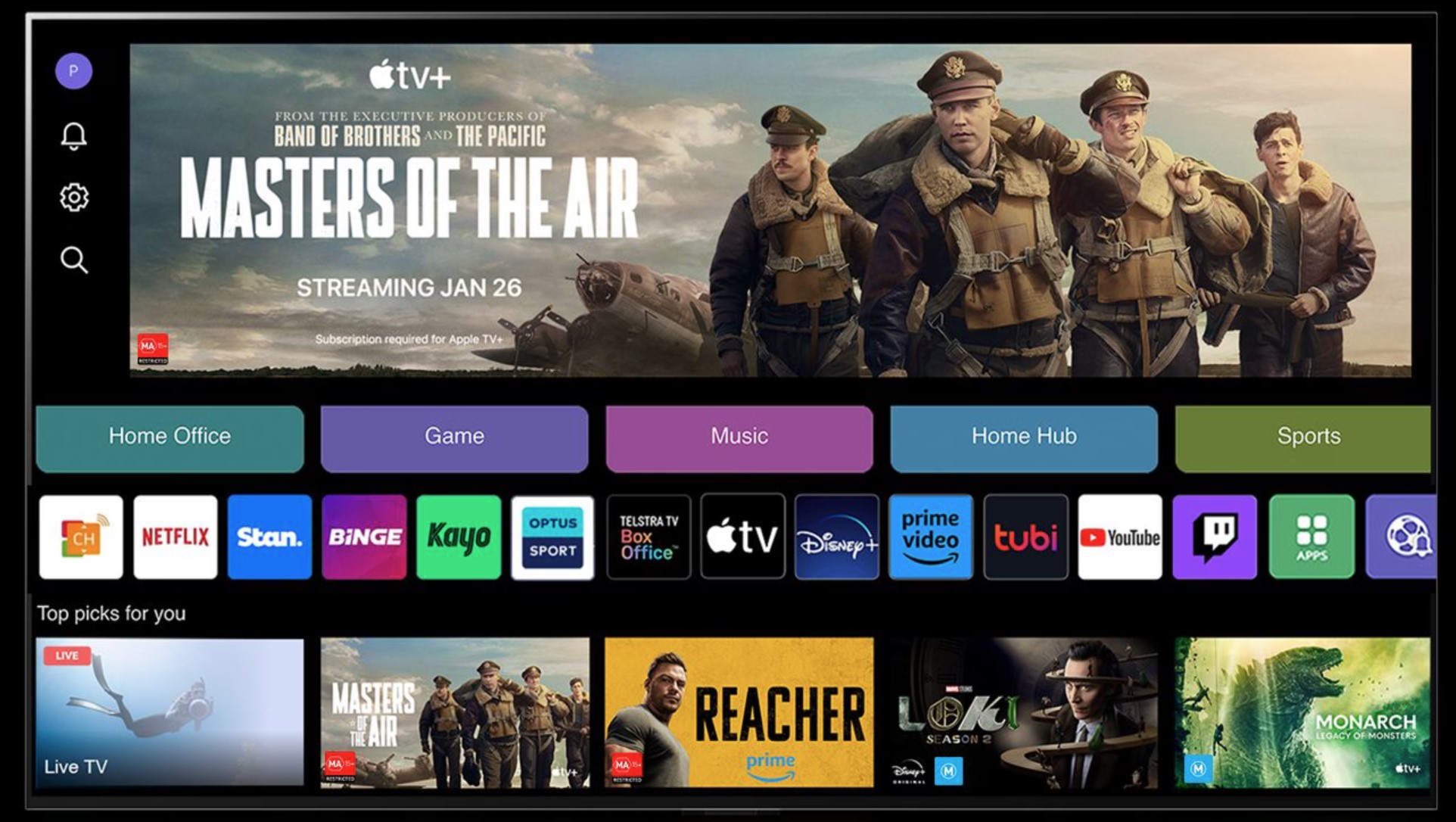
To be fair, Samsung does this with TV Plus.
To use the TV’s essential smart functions, you must agree to sign into an LG Account and its Terms of Use and Privacy Policy. If you want to use more smart services, you must agree to a viewing information agreement, a voice information agreement, an Interest-based cross-device advertising agreement, and an LG Channels agreement appended at the end of this review.
LG allows you to reset the advertising ID, limit advertisement tracking, and delete viewing and voice information. However, that is a little late, as your data has already been collected.
Bottom line:
I have read all 20,000 words, and while I object to a TV/Brand knowing so much about my viewing habits and serving me advertisements, LG’s policies do not contain anything evil, and the Privacy and Terms of Use are benign.
When you buy a TV, you are not thinking about the 43-page and nearly 20,000-word agreement to use the fully use device fully. To be fair, Samsung has eight nested policies and over 35,000 words, so both companies are hoovering up your viewing data.
PS – this is in addition to any streaming app privacy policies.
Apps – Pass+
The LG app store has over 2000 apps (Game 458, Entertainment 1305, Life 229, Education 56 and News/Info 73). It certainly has all Australian digital TV apps and streaming services. It appears to have more variety than Samsung, but the real winner is Google TV.
LG QNED91TSA 2024 Base Specs (65”)
Its specs are identical to the QNED86TSA but with a backlit mini-LED, Dolby Vision, and 2.2 sound.
- 65, 75” 86”
- α8 AI Processor 4K (Adds AI feature – see AI later).
- HDR10 panel (Dolby Vision decode)
- VA full array backlit LCD. 86” is IPS.
- 100Hz refresh (AU 50Hz power)
- 10-bit/1.07 billion colours
- Claim 100% DCI-P2 (test 96%)
- Native Contrast 8000:1 (VA has a much higher contrast and the expense of viewing angles)
- Delta E out of the box: approx. 2.1. Can be calibrated.
- WebOS 24 – 4 webOS upgrades over five years
- LG Channels 300+ free channels
- 4 x HDMI 2.1 4K@100/120Hz (eARC port 3)
- Ethernet 10/100
- 2 x USB-A 2.0 5V/.5A/2.5W for flash drives and USB Camera compatible
- Optical out
- Wi-Fi 5, BT 5.1 (SBC/AAC/aptX) and supports AirPlay 2 and Chromecast
- 400 x 400 VESA wall mount.
Ai – A strong point – Pass+
LG has particular expertise in AI, which has excellent ‘automatic settings’.
- AI Brightness Control (changes brightness to match ambient light)
- AI Concierge (content recommendations based on what you watch)
- AI Genre Selection (changes settings to the type of content)
- AI Picture Pro (automatically selects the best resolution, brightness, etc)
- AI Super Upscaling 4K
- Advanced Local Dimming (Dimming Pro)
- AI Sound Pro (optimal balance between sound effects and clear voice. It will faux-upscale 2.0 content to 9.1.2, but the speakers cannot handle that.
- AI Acoustic Tuning (Standard, Bass Boost and Treble Boost) in your viewing space setup.
How does the image look? – Pass+
With the caveat that it can handle bright rooms, it looks best when ambient light from the rear of the seating area, overhead, and sides can be controlled.
Then you have the issue of calibration. It has a Personalised Picture Wizard that can identify your preferences. This is in addition to SDR formats of Vivid, Standard, Eco, Cinema, Sports, Game, Filmmaker, (ISF)Expert (Bright Room), and (ISF)Expert (Dark Room). The HDR/Dolby Vision setting is automatic when it encounters a signal it can decode.
All these settings give you broad control over what you see. We found Vivid was too bright. Standard was best for Free-to-Air TV, digital streaming, and Cinema for most movies in a well-controlled ambient light room.
The image quality is what I expect of any fully backlit 100Hz VA panel with dimming zones.
You may not be able to see the differences between the settings below as you will likely view this on an 8-bit phone screen or desktop monitor. Look for details in the hair, green eye shadow, red lips and jewels. Also, look at the black background for subtle tone differences.








HDR10/Dolby Vision – Pass
Having been spoiled over the years watching Dolby Vision content on premium OLED TVs, I can say that this is a Pass for Dolby Vision moving to a Pass+ if you have good ambient light control. OLED, of course, is Exceed.
That is partly due to brightness and its effect on contrast, but mostly, it lacks the finer ability to show all the details in dim or bright light (some black crush). Joe and Jane Average will never know, as TV viewing pleasure is almost equal parts image and sound, and you will be buying a soundbar for this.
SDR – Pass+
Whether it was free-to-air TV or digital streaming, it aced every test. It is bright and colour-accurate. My only caveat is the VA panels’ smaller field of view.
Colour and purity – Pass+
QD Mini-LED can get two out of three right. Brightness means overly saturated colours but poor contrast. Great contrast (the difference between pure black and white) usually means lower brightness and duller colours. Only OLED can do all three well and achieve that balance between inky blacks and vibrant colours, but it still needs well-controlled ambient light.
After basic calibration (mainly balancing contrast and brightness), we felt that the Quantum Dot colours and purity exceeded our expectations.
Our tests’ primary colours, red, green, and blue (RGB), are nearly 100% accurate. Secondary and tertiary colours (like skin tones) are pretty reasonable.
The most accurate picture mode was Filmmaker, but it also has the lowest brightness. Standard is suitable for FTA TV and Cinema for movies where you have good ambient light control.

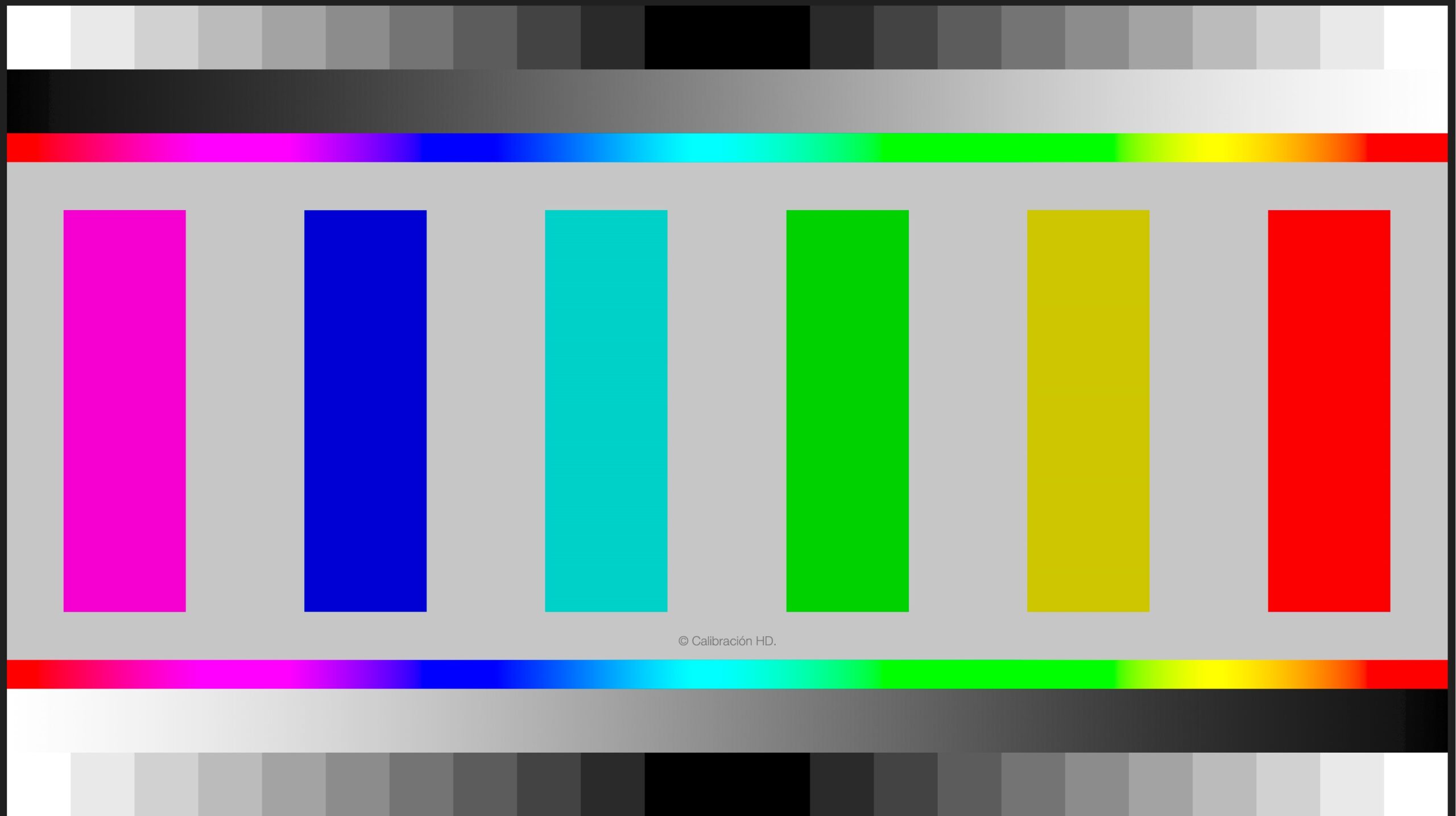


Contrast – Pass+
We measured over 8000:1, which is well above any lower-cost QD/LCD TVs. However, it is still insufficient to produce deep, inky blacks like OLED.
When local dimming is enabled (Off, Low and High), the screen looks more like black, but the higher dimming, the more blooming it creates.



Gradients- Pass
There was minor colour banding, again more of a mini-LED characteristic.


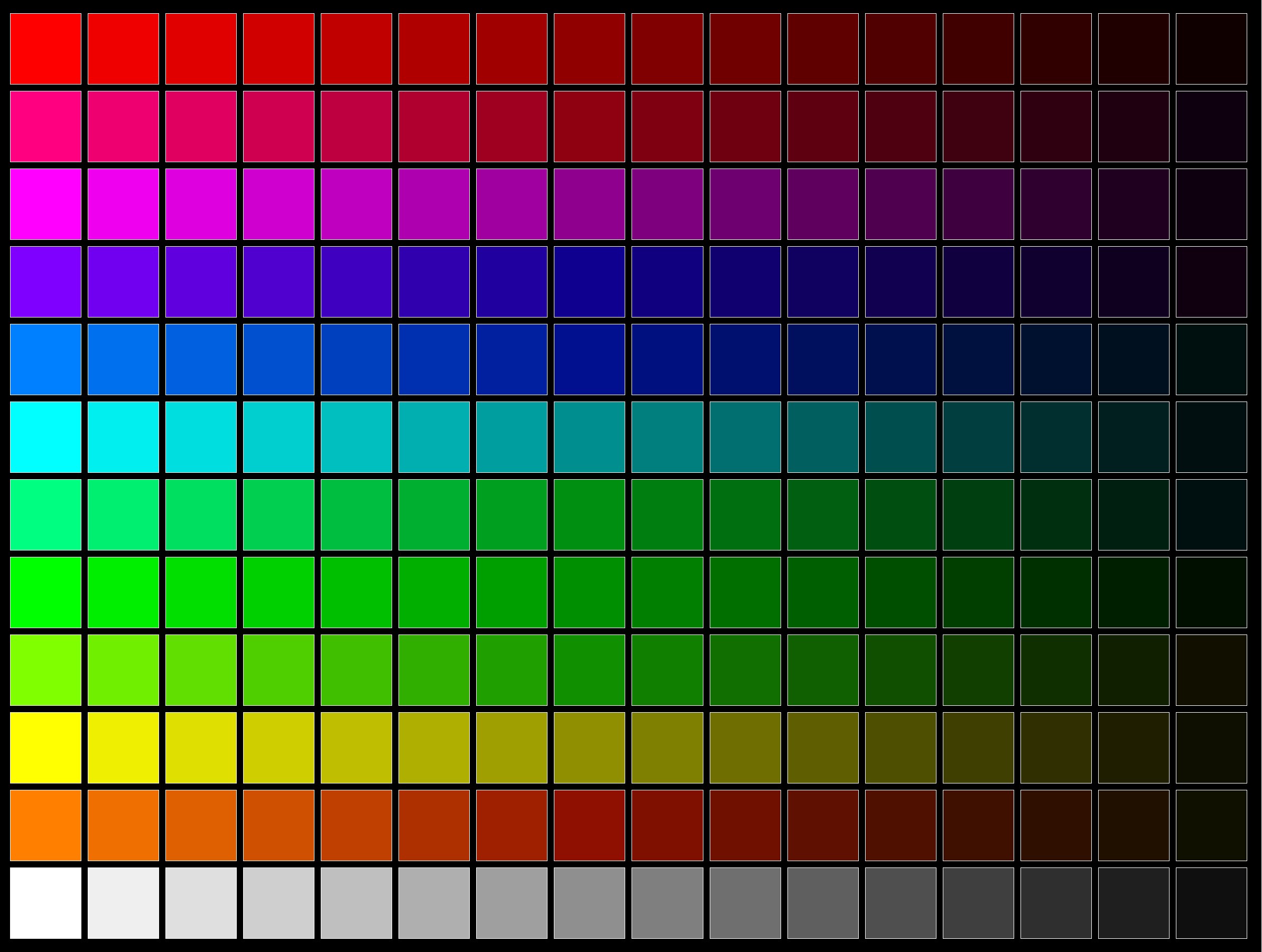
Blooming and dimming – Pass
There is a slight blooming around defined white objects on a black background, e.g., subtitles – the text has a sort of halo around it. We could easily read 24-point text, but OLED gets down to 14-point.


You can adjust dimming levels – we found the default low produced the least blooming.
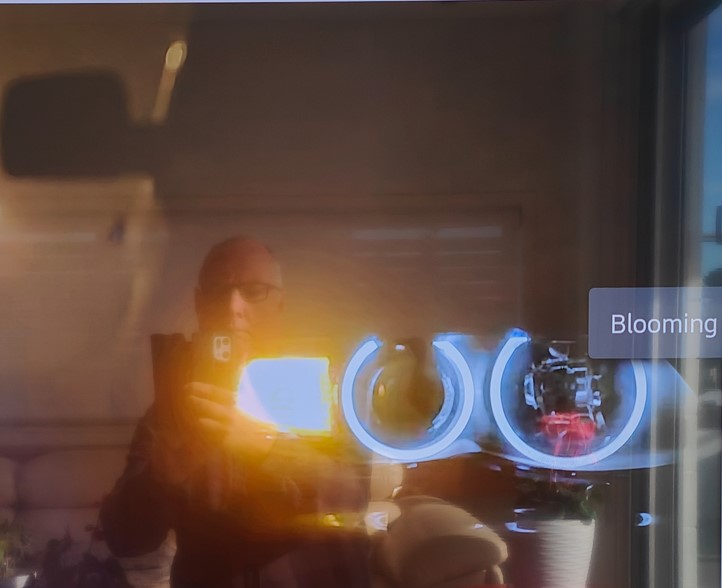
Brightness – Pass+
All TVs quote peak brightness in a 2-10% screen area when displaying HDR content. As a rule, SDR (standard dynamic range) brightness is around half of the peak,
- SDR (Standard mode) sustained/peak nits 2% screen 655/650 and 100% 575/575 (it reached 870m in a 25% window).
- HDR10 sustained/peak nits 2% 754/745 and 100% 620/620 (it can reach 950 nits with specific settings)
It is more than enough to defeat bright Aussie lounge rooms.



Uniformity and DSE
The screen’s colour and brightness were reasonably uniform, well within the 10% variation we expect. There was some minor Dirty Screen Effect (DSE) in the four corners.
Off-angle viewing – Pass
VA has a much narrower viewing angle, and you lose contrast (washed-out colours) past 130° (90° is straight on). The best viewing angle for this TV is relatively straight on.


Reflectivity – Pass
It has pretty high reflectivity, mainly if a bright light is behind the viewing area (as per the photo below). It is not an issue at night or with some ambient light control.

Motion Smoothing – Pass
It is a native 100/120Hz (Australia uses 50Hz power, hence 100Hz), and it uses Black Frame Insertion for motion smoothing 200 (this is not Hz). Stutter is noticeable in 24fps.
LG’s Motion Pro Smoothing does a great job when needed for sports and fast action. Leave it off for normal viewing.

The leading edge of moving objects is a bit darker than it should be, leaving a slight but acceptable halo behind them.
Upscale – Pass
It does a great job on 1080p SDR Free-to-air and streaming. Our impossible 480p test is below. It does a an excellent job preserving finer details – better than most mini-LEDs. Cinema is closest in colour to the original.


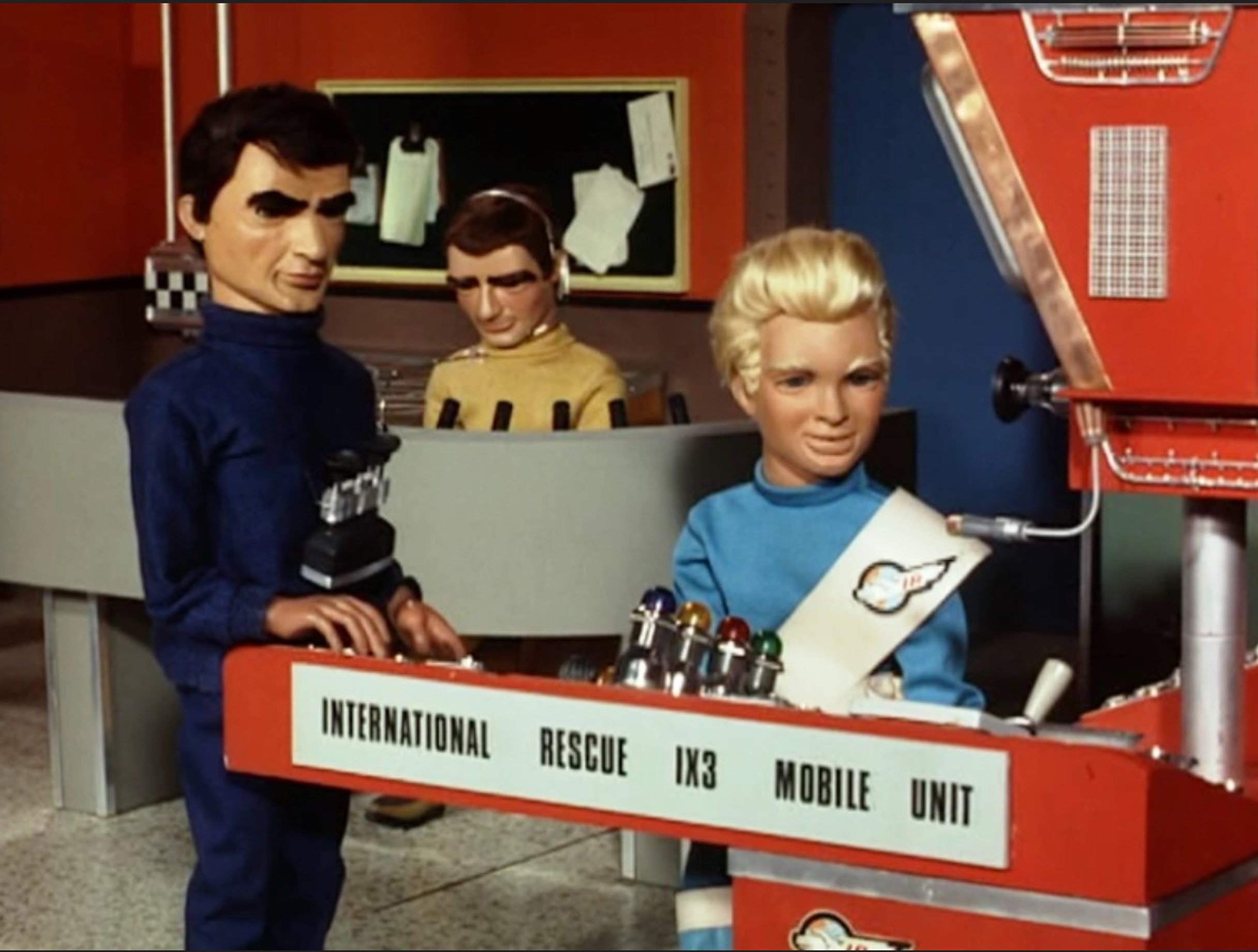

PWM – Exceed
We could not detect Pulse Width modulation, which is excellent for PWM-sensitive people.
LG TV speakers – 2.2 – Pass
I swear LG and other TV makers purposely include barely adequate TV speakers to encourage buying a soundbar.
The LG setup is two x 10W down-firing full range and two x 10W rear-firing woofers.
The maximum volume is 80dB, with noticeable distortion and frequency clipping. Sound quality is best described as hollow and tinny. Overall, back off to 75% volume, which is acceptable for clear voice and free-to-air TV.
It has no low bass (20-50Hz); mid-bass starts from 60Hz, growing slowly to high bass at 200Hz. This is enough to hear bass but not to feel it. The frequency graph below (gold line) is pretty choppy, meaning it clips the frequencies and lowers the dynamic range. The treble is choppy and lacks the ‘airy feel as if you were there’.

It has seven sound modes – AI Sound Pro, Standard, Cinema, Clear Voice Pro, Cricket (Sports), Music, and Game Optimiser but most will select AI Sound Pro.
Sound Share is good as you can use the TV speaker and an Optical out soundbar or hearing device. It does not have a 3.5mm jack, but BT 5.0 is OK and supports two earphones.
The EQ can recess frequencies but not boost them.
Summary: Mediocre sound and limited, very front-centric Dolby Atmos effects.
WOW Orchestra
WOW Orchestra simultaneously uses the LG TV and compatible LG Sound Bar speakers to create ‘impactful’ sound. My take on WOW Orchestra is that it adds a slightly fuller sound to a soundbar but can introduce a less-than-perfect sound when driven at higher volume levels.
The review unit was accompanied by an SG10TY 420W 3.1 channel soundbar with WoW Orchestra capability. We will review that separately, but below is the WOW Orchestra native sound signature. It adds heaps of Bass, but the faux Dolby Atmos experience is fully forward-centric.

Whether it is LG or Samsung’s Q-Symphony, I prefer a better soundbar than a combo TV speaker and lower speced soundbar.
This is where you decide just how good a sound you want. Go for the best you can get because Dolby Atmos adds so much to movie viewing and clear sound.
The first thing to remember is that no matter how good a soundbar sales pitch is, you cannot get true Dolby Atmos without at least a 5.1.4 system with dedicated rear speakers. Read Five tips for better TV sound – Dolby Atmos for beginners and How to buy a soundbar that meets your needs?
LG has the excellent S95TR, 810W, 9.1.5 true Dolby Atmos soundbar with 15 speakers, including 2 x 3-channel rear speakers (left/right rear side-firing surround and up-firing). It is $1699 and worth every cent, but we have seen it as low as $1299 – bargain. This totally eliminates ‘psychoacoustics’ (bounding sound off ceilings and nearby walls) to create a true 360° Dolby Atmos Experience. In my opinion, it is the one to covet.
Game Optimiser (not tested)
LG has long been the TV of choice for gamers, and this Mini-LED offers a more cost-effective alternative (No Dolby Vision games) with little trade-off.
LG was one of the first to implement 4 x HDMI 2.1 with 4K@120Hz and full support for Xbox and PlayStation (not Dolby Vision) games. It supports selectable game genres, Reduced Blue Light, Dark Room mode, Minimise input lag, VRR 120Hz, ALLM, HGiG, G-Sync, AMD FreeSync Premium, and more. Lag is <13ms.
The LG QNED91TSA 2024 also supports
- NVIDIA GeForce Now cloud gaming.
- 21:9 (60Hz) or 32:9
- 3840 x 1600/1080 or 2560 x 1080.
- Dynamic Tone Mapping for HDR
- Game Sharpness
- Colour depth
- Black levels
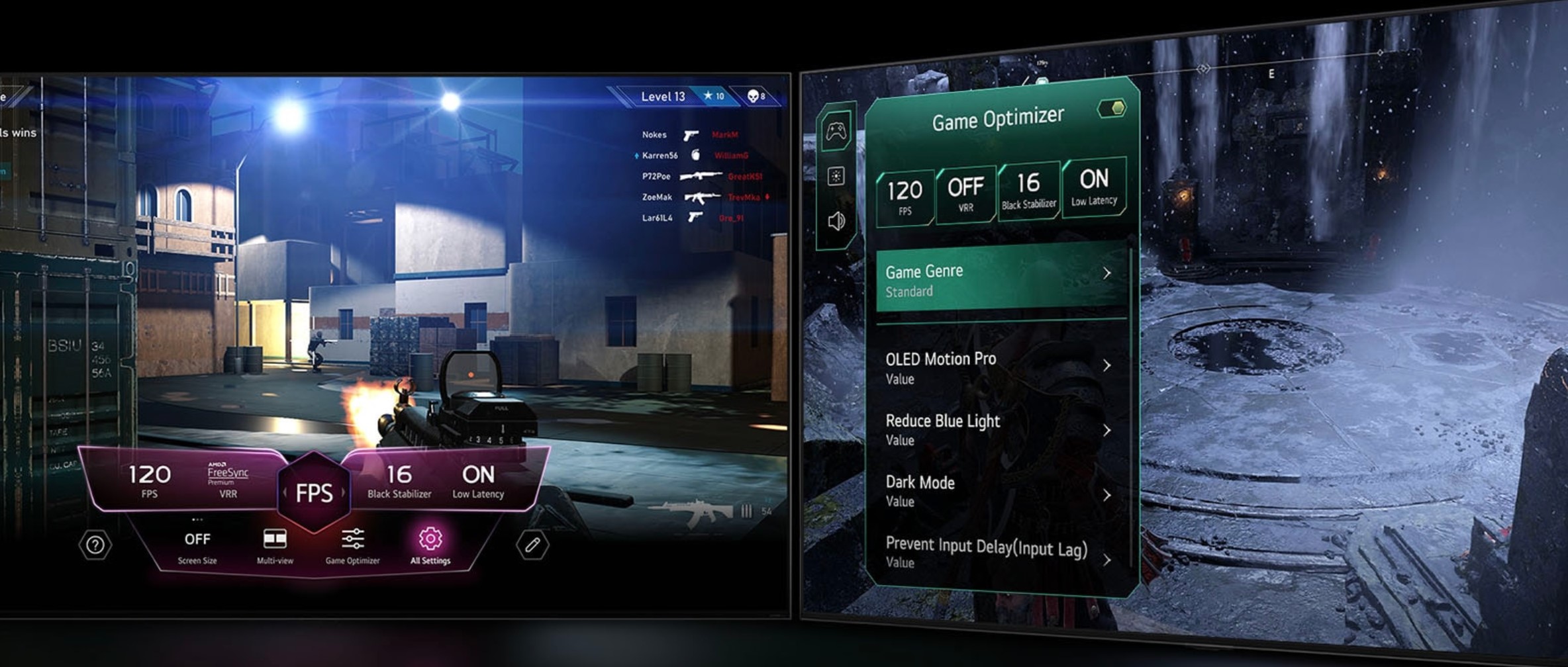
Power use (75” model tested) – Pass
The LG QNED91TSA 2024 has a 5-star Energy rating and claims to use SDR 104kWh per 1000 hours (Test 120W) and HDR 207Wh per 1000 hours (Test 259W).
In English, that means about 120W per hour for SDR content and 250W per hour for HDR content (Tested).
CyberShack’s view – The LG QNED91TSA earns its premium full-array mini-LED status.
I have been reading several Reddit posts about this TV and the Samsung QN90D, TCL C755, TCL C855 and Hisense U8 and X. I think the ‘R’ in Reddit stands for rubbish or raving because there are so many there who like to see their totally ill-informed and hater comments in the thread.
For example, one thread talks about blooming and how this LG’s blooming is so bad compared to the Samsung QN90D (which I am in the process of reviewing), and frankly, if anything, Samsung has more blooming. Or that the TCL C755 (also reviewing) is superior when that is more akin to the QNED86TSA. The C855 (also reviewing) is a closer match.
My take is that this has fantastic colours, excellent brightness (too much, so back it off), and good (not superb) HDR/Dolby Vision picture details. The VA panel gives it good black levels at the expense of off-angle viewing.
LG QNED91TSA 2024 Competitors
If you want Dolby Vision capability done right, then this competes well with the (prices are RRP, and there are substantial discounts at present, and don’t forget the soundbar bundles)
- LG QNED91TSA 2024 65/75/86 RRP $2999/3999/5499 (this review)
- TCL C855 65/75/85/98 $2999/$3999/$4999/9999 (seen at lower cost)
- Hisense U8NAU 65/75/85 $2699/3600/ (not the UXAU, as that is a different category) – ditto
- Sony Bravia 7 65/75/85 $2875/3635/4295 (not the Bravia 9 as that is a different category)
Or consider OLED (RRP followed by current discounts) – LG OLED reviews soon.
- LG OLED B4 65” $2499
- LG OLED evo C4 65/77/83” $4299 ($3299)/$5999 (4799)/$7999 ($5999)
LG QNED91TSA 2024 Ratings 81/100
Note: Ratings now use 70/100 as a pass mark. 2023 and earlier used 80/100, so you can deduct 10 points from these for reasonable parity.
- Features: 85 – It has all the necessary hardware and more AI smarts than competitors.
- Value: 80—It is comparable with the Chinese brands, so you must assess whether the LG brand means more to you. If you get it on sale value is 85.
- Performance: 85 – A definite improvement over the QNED86TSA – you will not be disappointed.
- Ease of Use: 80 – LG WebOS 24 is easy to use with all major streaming Apps and now has a New policy. Its warranty is 12 months, and Australian Consumer Law should protect you for a few years. However, the 30K-word terms and conditions are a real stretch when Google TV is about 4000.
- Design: 75 – Black glass slab, good centre pedestal and decent remote.
LG QNED91TSA 2024
CyberShack Verdict
LG QNED91TSA 2024 mini-LED TV
65/75/86 RRP $2999/3999/5499 but look for EOFY discounts and soundbar bundles
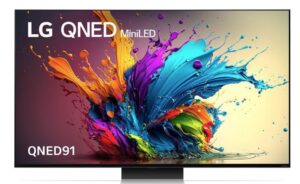






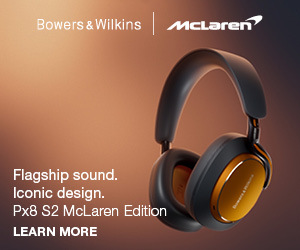
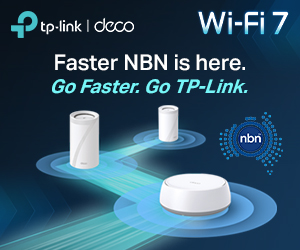

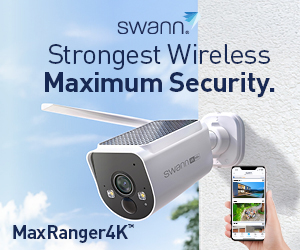


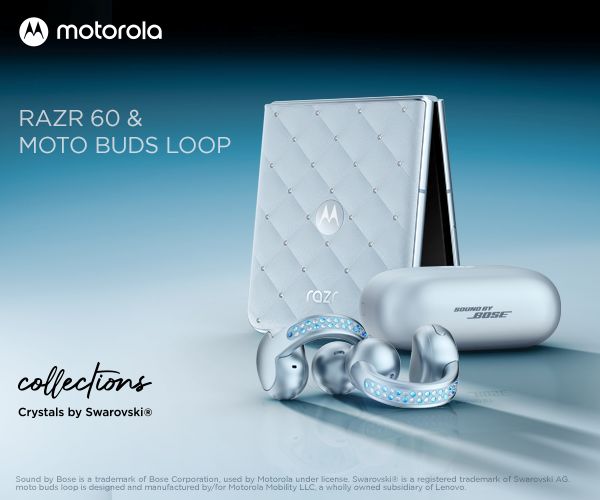


2 comments
Christian
I find that the Free to Air TV picture is quite average. People’s faces are not sharp and even some small words are not even clear enough to read. Been through settings and even used the AI setup and doesn’t change the quality.
Is there anything else I can do to make the picture better?
Ray Shaw
Hi Christian
We found the TV excellent for FTA SDR so its either faulty or something else is not right. My gut feel is that you should investigate TV antenna strength see https://www.lg.com/us/support/help-library/lg-tv-how-to-check-channel-signal-strength–20153292356388. Its not current and you may have to experiment with the instructions to find it. You have signal strength and signal quality – both are different. Quality should be 100% and strength ideally 75%+. If either are off then a Kingray antenna amp/splitter works well for me https://www.jaycar.com.au/indoor-tv-amplifiersplitter/p/LT3288. Finally a factory reset and reinstall may help by resetting all images to default. Let me know how you go.